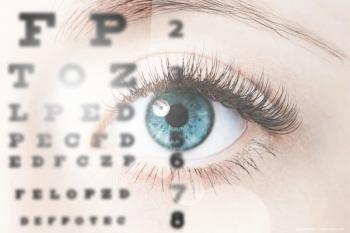
Find out when to perform a nonglaucomatous workup
Boston—Physicians must remain vigilant to detect nonglaucomatous pathologies that can mimic glaucoma and can use a set of time-tested recommendations to help determine which patients need a nonglaucomatous workup, said Louis R. Pasquale, MD, co-director, Glaucoma Service, Massachusetts Eye and Ear Infirmary, Boston.
To help answer the question of when to order neuroimaging studies on a patient with pathologic cupping and presumed normal-tension glaucoma, Dr. Pasquale cited a 1998 study by Greenfield et al. that concluded that patients younger than 50, those with visual acuity less than 20/40 that cannot be explained by other causes, and those with rapidly progressive optic nerve disease are at highest risk of having an intracranial mass lesion rather than glaucoma.
"These data underscore the need to be vigilant to detect cupping secondary to anterior visual pathway lesions. Yet pathologic cupping at normal IOP is fairly prevalent, so therefore we need to reserve neuroimaging studies for those at highest risk for harboring CNS pathology," Dr. Pasquale said.
He described several cases from the literature illustrating when to order a nonglaucomatous workup.
One case report involved an eye-rubbing optic neuropathy that was construed as normal-tension glaucoma. The authors described a young patient who had a dramatic vision loss over a 3-year period. An exhaustive workup was conducted, including a biopsy of the left optic nerve after the left eye reached the point of no light perception, but no cause of neuro-ophthalmic disease was found. The patient's history of habitual, forceful eye rubbing was only disclosed after the biopsy.
Before the eye-rubbing behavior stopped, the study authors had recorded a 7 dB per year decline in the mean defect on Humphrey visual field testing. Dr. Pasquale indicated that typical glaucomatous progression occurs by about 1 or 2 dB per year, and this, along with the pale optic nerve, suggested that the patient did not have glaucoma.
"Pallor out of proportion to cupping should raise concerns about nonglaucomatous optic neuropathy," he added.
Another good rule of thumb to follow is that visual acuity less than 20/40 without an obvious cause in the setting of less than advanced cupping should raise the suspicion that a nonglaucomatous workup is needed, Dr. Pasquale said. Visual field loss not consistent with nerve fiber layer dropout should also raise concerns.
Dr. Pasquale also described a patient referred for evaluation of possible normal-tension glaucoma. Cupping looked suspicious, so visual fields were performed and showed unilateral superior temporal hemianopic defect in the left eye.
"Even a unilateral temporal hemianopic defect should raise concerns," Dr. Pasquale said. In this case, scans revealed a pituitary tumor that was removed by a neurosurgeon, after which the visual field defect vanished.
In addition, when looking at cupping in the context of patients who might have nonglaucomatous optic neuropathy, certain signs are specific to glaucoma, such as focal notching of the neuroretinal rim. Alternatively, diffuse thinning of the neuroretinal rim is not specific for either glaucomatous or nonglaucomatous cupping, he said.
"Furthermore, while disc hemorrhages are not highly prevalent within the glaucomatous population, they are rather specific for glaucoma, reducing your concern about the need to do neuroimaging on a patient with presumed normal-tension glaucoma," he added.
An afferent pupillary defect is probably not useful in detecting nonglaucomatous optic neuropathy, he continued. "Both glaucomatous cupping and cupping secondary to anterior visual pathway lesions can be markedly asymmetric, and both can produce an afferent pupillary defect."
Newsletter
Don’t miss out—get Ophthalmology Times updates on the latest clinical advancements and expert interviews, straight to your inbox.















































.png)


